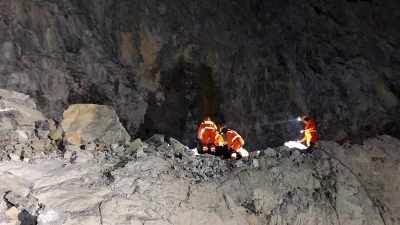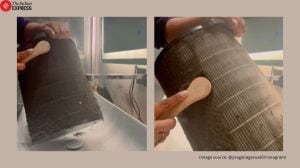Rubble from hillock will be building blocks for airport
The Navi Mumbai airport,now cleared,will be built from the rubble generated from razing the 90-metre hillock
The Navi Mumbai airport,now cleared,will be built from the rubble generated from razing the 90-metre hillock,state officials said,adding bidding will begin in six months.
The airport has to be built seven metres above mean sea level and the ground will have to be levelled. The Environment Ministry Monday cleared the levelling razing of the hillock which would be needed for flights to take off and land. Whatever earth is generated from flattening the hillock,it will be used to level the airport ground. We need to raise the airport level to seven metres above mean sea level. The entire earth from the hillock will be used, said T C Benjamin,principal secretary,Urban Development.
According to Benjamin,60 million cubic meters of earth will be generated out of the hillock which will all be used at the airport. That is just enough to level the airport. This will ensure that we will not have to get truckloads of earth for the airport as it will all be in the airport perimeter, added Benjamin.
CIDCO will need MoEF clearance to remove part of the mangroves and Defence Ministry clearance to build an airport. We will move both files this week itself. The mangroves are deemed protected as per a High Court order and we have to ask for a deforestation tag to start construction, said Benjamin.
The government will notify as green zones,310 hectares on the eastern side of the airport near Kamothe as a green zone and another 60 hectares near the western side near Mohan Creek. These are in addition to the two other areas to be protected,97 hectares and 245 hectares of mangroves,in the Waghvali village lagoon,said Benjamin.
The state will have to ensure 20 per cent of the energy used at the site is from non-conventional sources. Chief Minister Prithviraj Chavan said the state government would have to obtain permission to cut mangroves from the Bombay High Court and clearance under the Forest Conservation Act.
It will have to rehabilitate 3,500 families with compensation,after acquiring 436 hectares. About 67 per cent of the total land is already in CIDCOs possession and 12 per cent is with the government.






- 01
- 02
- 03
- 04
- 05

























